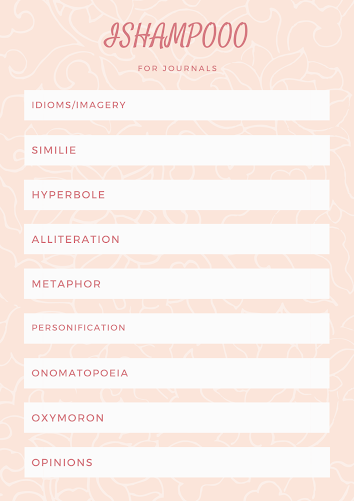Cambridge IGCSE First Language English 0500 Journals Techniques Paper 1 Reading
Hi Students, Teachers, tutors, and anyone reading this.
How is Autumn treating you? I am sure it's a beautiful transition from the scorching 2021 summers.
I am back with Paper 1 Reading First Language English 0500 and today shall be going over some extremely useful sentence starters to bag that A* on your IGCSE exam.
I will be focusing on journals again in this blog post as I have been seeing a recurring pattern of journals in past paper questions, hence thought of uploading some more notes for Journals. There are already some tips/techniques for journals in my previous posts and a past paper answer too. Please feel free to go over them as well.
Please use the following sentence structures, tips and vocabulary for a journal entry:
As a journal writer for IGCSE, please take care of the following:
1. It has to be chronological and in the order of events happening in the passage of the reading insert. The content points have to be taken in the order of happenings in the insert too.
2. Use descriptive time connectives to show the furthering of time. Eg: When morning heralded.
3. It uses ISHAMPOO (acronym): Imagery, idioms, similes/sibilance (repetition of
s), hyperbole, alliteration, metaphor, personification, onomatopoeia, an oxymoron (
the deafening silence of the Alps) for added effect on the reader. A handy poster for ISHAMPOO is pasted below for your convenience.
4. It has to use descriptive language: show versus telling: monologue, eg: oh what a
day!
5. It has to appeal to the 5 senses (sensory language), including motion.
Eg: her mouth reeked of rancid garlic.
6. It uses time connectives and time transitions. Example: When we trekked down the hill at 5, we were already starving.
7. It has to have feeling and emotive words, unlike reports. Example: I was exasperated to see the ailing dig being chained out in the sun.
8. It is subjective and not objective( NOT FACTUAL OR NUMERIC). Example: I think Ali is going to find this hilarious as he loves romantic comedies.
9. It has to be full of thought and mood words. Example: Bill was positive and peaceful after migrating to the US.
10. It is full of sentence variety: APPOSITIVES, ABSOLUTES, GERUNDS,
INFINITIVES (these are grammatical structures that will be taken care of in a separate post).
11. It uses personal pronouns: I, our, me, mine, ours, ourselves, we, etc.
Personification: While sobbing my heart out, my pillow pacified, calmed and hugged me.
Onomatopoeia: When the creaking on the floor and the bangs on the door grew louder, we were frightened.
Oxymoron: The audience swooned to the contemporary classic melody of the performer.
If a student tries to incorporate the above devices in journal writing, there's no doubt they are getting a straight-A in their exams.
See you in my next blog post:)




Comments
Post a Comment